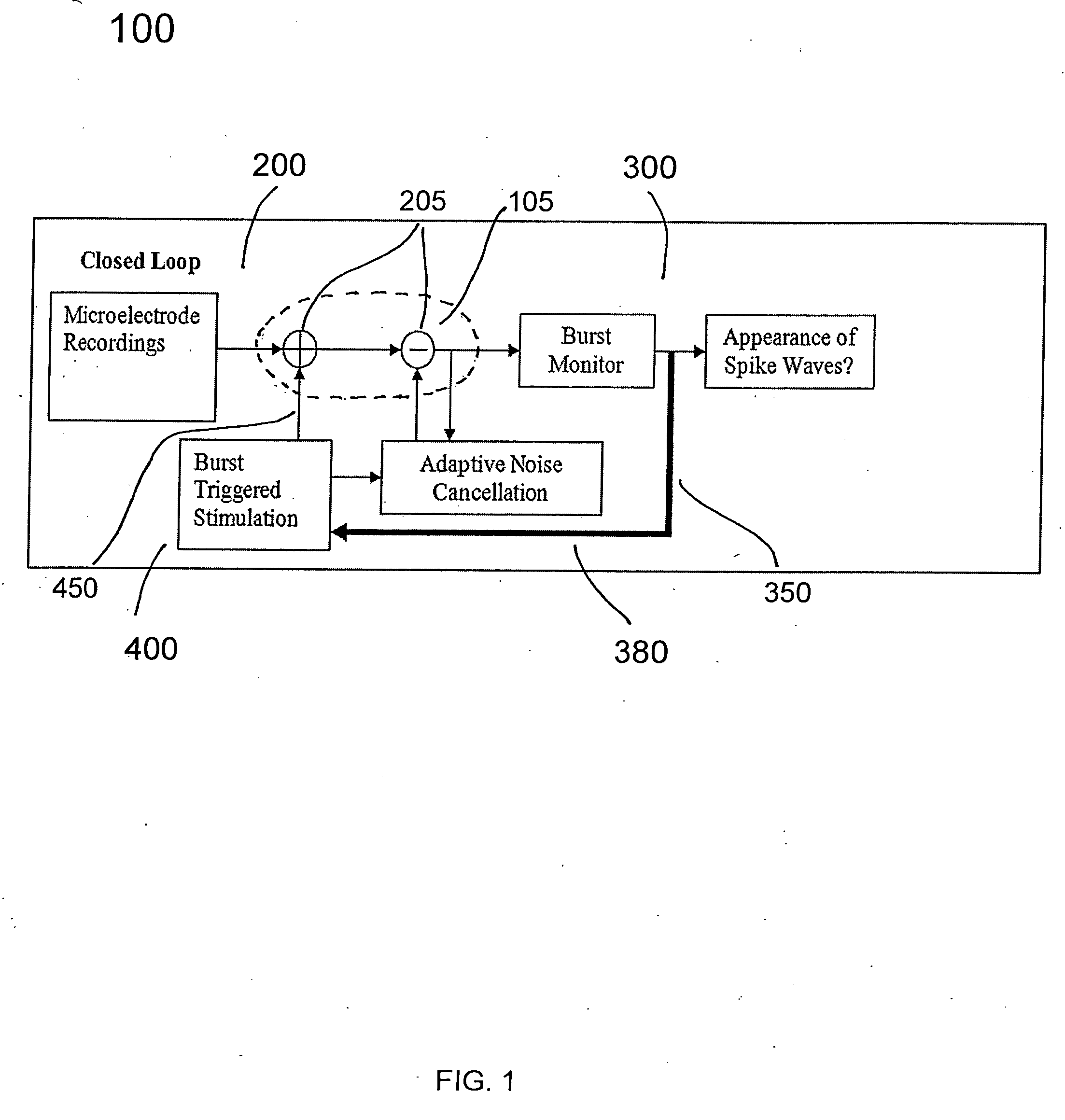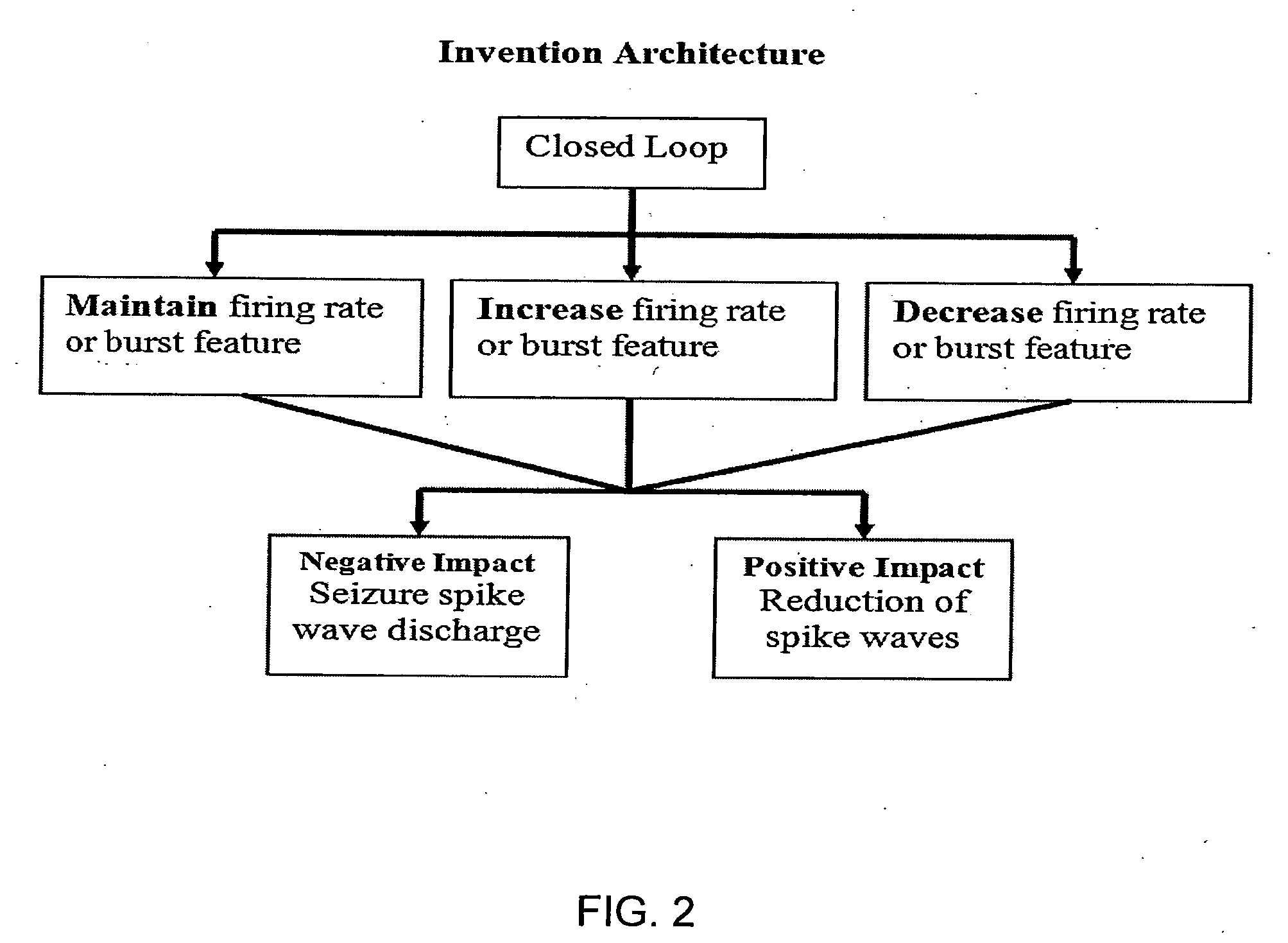Closed-loop micro-control system for predicting and preventing epilectic seizures
a microcontroller and epilepsy technology, applied in the field of seizures prediction and intervention, can solve the problems of uncontrollable epilepsy, significant side effects of current therapeutic use, and about a third of patients remaining unresponsive to current medications, so as to achieve the effect of preventing or reducing the severity of seizures and high resolution
- Summary
- Abstract
- Description
- Claims
- Application Information
AI Technical Summary
Benefits of technology
Problems solved by technology
Method used
Image
Examples
example 1
Materials and Methods
[0102] The following methods are useful in testing and practicing various aspects of invention.
[0103] 1.1 Electrode Implantation in Animal Model of Spontaneous Seizures. Adult male Sprague-Dawley rats are premedicated with xylazine and anesthetized with isoflurane in oxygen and placed in a Kopf stereotactic frame. A midline incision is made in the scalp and all soft tissue is loosened from the dorsum of the skull. A craniotomy is drilled for electrode placement such that the long axis extends from about 1.7 mm lateral to 3.5 mm lateral from the bregma, and the dura is removed. Up to about 16 microwire recording electrodes (50 μm polyimide insulated tungsten microwires) are chronically implanted into CA1-2 (about −3.8 mm posterior, 1.7 mm lateral (left) of bregma) and dentate of the hippocampus. The recording sites are involved in the generation of epileptic discharges [30].
[0104] The electrodes are lowered (measuring from the surface of the cortex) at a rate ...
example 2
Microstimulation and Neuromodulation Studies in Animal Models of Epilepsy
[0113] 2.1 Experimental Animals and Procedures. Preclinical investigations and data collection techniques used to evaluate the effects of stimulation as described herein require identification of an appropriate animal model. One such model is a chronic limbic epilepsy model. The rat chronic limbic epilepsy (CLE) model is a spontaneous seizure model that is created by inducing prolonged seizures (status epilepticus) through direct electrical stimulation of the hippocampus. After a period of several weeks to a month of recovery, the animals begin to have spontaneous seizures that last for the rest of their lives [B2-B4]. Rat CLE is considered a good model of temporal lobe epilepsy since it is characterized by spontaneous limbic seizure activity, which is the clinical hallmark of MTLE. Furthermore, in rat CLE both the seizure locus and the pathological changes in the limbic system of the animals reflect what is f...
example 3
Studies of Epileptic Bursting in Animal Models
[0122] 3.1 Bursting Neurophysiology in Connection t with Epilepsy. For nearly thirty years, epileptologists have been studying macroscopic electroencephalogram (EEG) recordings from the scalp to obtain global and local measures of scalp potentials using a variety of linear, nonlinear, and dynamical computational measures [B23-B27]. On the surface of the cortex, electrocorticographic (ECoG) electrode arrays have been used in the clinical setting to determine epileptic foci, but the analysis of the signals has been conducted at the level of the system and circuit mechanism [B28, B29]. Recently, with the advance of multi-site microelectrode technology, acute preparations of hippocampal recordings have provided data on neuronal firing related to the epileptic condition [B30]. In conjunction with in vivo recordings in both animals and humans, slice physiologists have performed elegant experiments to infer the normal and bursting responses of...
PUM
 Login to View More
Login to View More Abstract
Description
Claims
Application Information
 Login to View More
Login to View More - R&D
- Intellectual Property
- Life Sciences
- Materials
- Tech Scout
- Unparalleled Data Quality
- Higher Quality Content
- 60% Fewer Hallucinations
Browse by: Latest US Patents, China's latest patents, Technical Efficacy Thesaurus, Application Domain, Technology Topic, Popular Technical Reports.
© 2025 PatSnap. All rights reserved.Legal|Privacy policy|Modern Slavery Act Transparency Statement|Sitemap|About US| Contact US: help@patsnap.com



